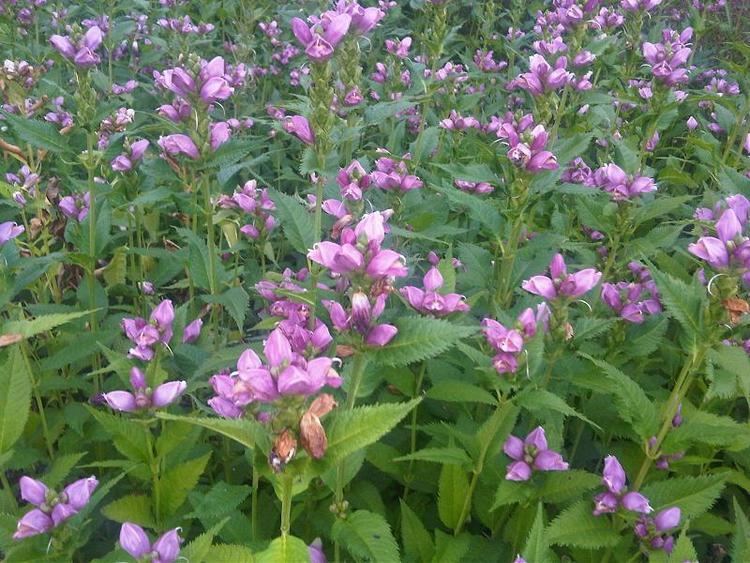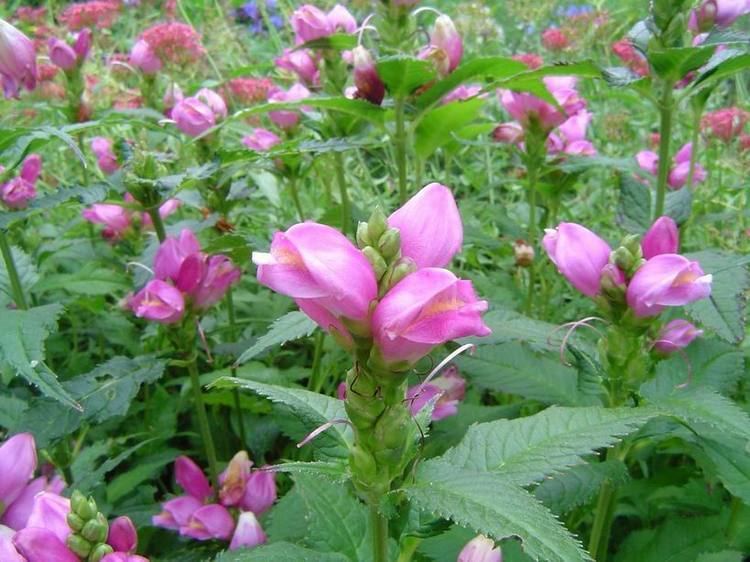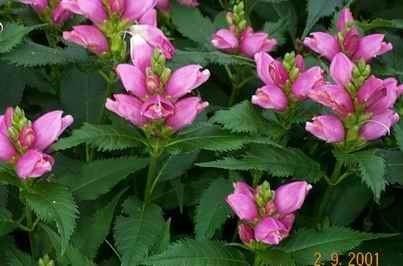Rank Species | ||
 | ||
Similar Chelone, Chelone glabra, Chelone lyonii, Coreopsis verticillata, Brunnera | ||
Chelone obliqua (/kəˈloʊni əˈbliːkwɑː, kiː-, -neɪ-, -oʊˈbliː-/), with the common names Red turtlehead, Pink turtlehead, or Rose turtlehead, is a herbaceous perennial plant belonging to the family Plantaginaceae. This uncommon wildflower is endemic to the United States, and is native to the Midwestern United States and Southeastern United States.
Contents

The three common names come from the bloom colors, yet they may even appear in other colors such as purple or white. When blooming, the flower is said to resemble the head of a turtle.
Chelone obliqua
Description

Chelone obliqua is an herbaceous perennial plant, that grows to a height of 2 to 3 feet and can spread out in 1 to 2 feet.

The central stem is light green, smooth and hairless, and cylindrical; there are pairs of opposite leaves along the sides that tend to droop. Its leaf blades are lanceolate to broadly lanceolate, hairless, and serrated along their margins. The upper blade exhibits a dark green surface, while the lower blade surface is a paler green. A petiole is arising from the base of each leaf blade.

It blooms later than some herbaceous perennials, in mid to late summer. The flowers are tubular 2-lipped blooms, with a small yellow beard inside each lower lip. There is no floral scent and are cross pollinated by bees and attracted to butterflies.
An ovoid seed capsules evolves subsequent to the corollas of the flowers turning brown and falling off. The seeds capsules are initially light green and uncovered (no coating), and later turns brown and splits open to release the seeds. It has a rhizome root system, with occasional vegetative colony growth.
Subspecies
Subspecies include:
Distribution
Chelone obliqua is native to various states in the eastern and central parts of the country, including: Arkansas, Alabama, Florida, Georgia, Illinois, Iowa, Indiana, Kentucky, Massachusetts, Maryland, Michigan, Minnesota, Missouri, Mississippi, North Carolina, South Carolina, Tennessee, and Virginia.
It is found as tetraploid in the Blue Ridge Mountains; or as hexaploid in areas such as Tennessee to Arkansas and Michigan, and on the Atlantic coastal plain from South Carolina to Maryland. It has arisen several times from diploid ancestors of the other three species of the genus Chelone (Chelone glabra, Chelone lyonii and Chelone cuthbertii).
The plant has become a rare wildflower and is threatened and endangered in some states, according to the United States Department of Agriculture. The Rose turtlehead is endangered in the state of Arkansas and is a special concern in Kentucky. The Red turtlehead is endangered in Kentucky and threatened in Maryland. Lastly, the Purple turtlehead is endangered in Michigan.
Cultivation
Chelone obliqua is cultivated as an ornamental plant. Optimal bloom period is within the months of July and August.
Dispersal of seeds can occur in the early spring, then divide in mid-spring and produce root soft-tip cuttings in the early summer. It is best grown in moist to wet, rich, humusy soils in full sun to partly shaded regions. With an immense amount of sunlight during the summer time, it's wet and moist, or clay soil is essential for growth. It can also grow in any pH conditions (neutral, alkaline, or acidic). Hence, mainly grown in moist woods, swampy areas and along streams.
Some problems that may arise would be these turtleheads have a disposition to powdery mildew, rust, fungal leaf spots, and damage from slugs and snails.
